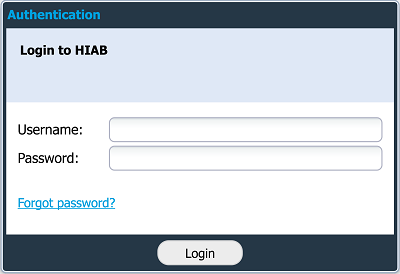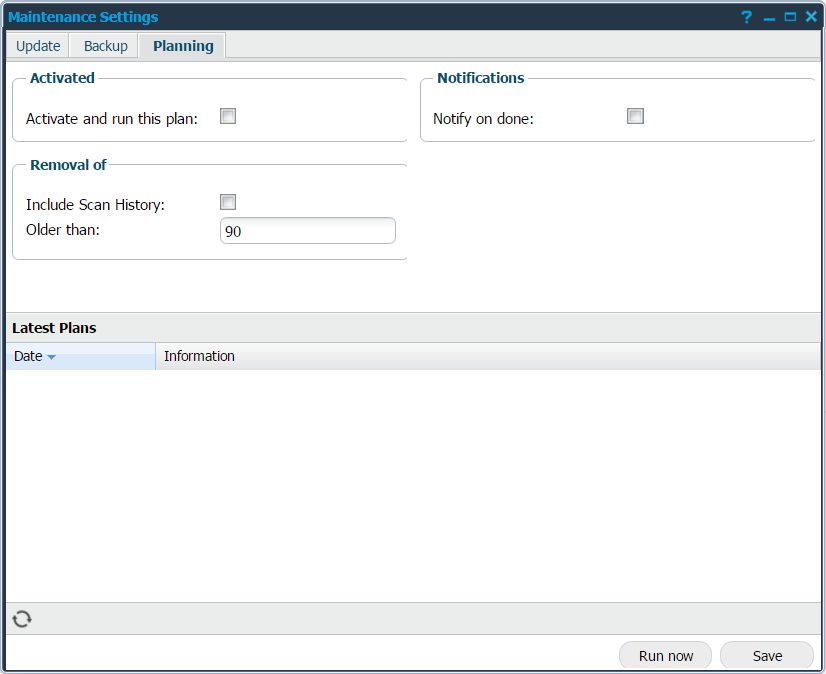HIAB Maintenance Settings
Last Updated: 2025-08-12
Purpose
This article provides users with a comprehensive overview of the Maintenance Settings for HIAB.
Introduction
This article provides a detailed overview of the Maintenance Settings for HIAB, focusing on managing updates, backups, and the automated removal of old vulnerability data. Users must have access to the HIAB Account and Portal Interface to use these features, particularly the Planning tab, which allows for daily removal of old data based on specified criteria and includes options for notifications and scan history. The Latest Plans section offers a configurable grid displaying information about executed plans, with options to run or save settings. The Planning tab is specifically available on the HIAB scheduler and includes sections for activation, notifications, and removal criteria.
Prerequisites
It is required that the reader has access to the HIAB Account and Portal Interface.
Available in HIAB only.
Log In
To launch the HIAB, open a web browser and connect to the HIAB by using its assigned network address.
Use HTTPS protocol.
Ex. https://your-appliance-ip.

HIAB Login
Log in using your credentials.
Update
This article explains how to update HIAB software, covering online/offline methods, scheduling, and managing settings in the Maintenance section.
Backup
This document details the HIAB backup service setup, enabling users to manage backups across various server types with scheduling and configuration options.
Restore
Restore a HIAB from backup files via FTP, SCP, CIFS, or local upload.
Planning
The Planning tab allows you to automatically remove any old vulnerability data that matches the given criteria daily.
The Planning tab is only available on the HIAB scheduler

The elements of the Planning tab are described below:
Activated
The Activated section determines if removal of old data should be performed every day.
Notifications
The Notifications section enable if you wish to receive an email once this has been performed.
Removal of
Include Scan History: Choose to include removal of scan history details. This will remove all trace of the scan that took place.
Older than: Removes scan data which is older than the given number of days.
Latest Plans
The Latest Plans displays the latest plan executed. This grid is configurable, clicking the arrow next to the name of any grid allows you to customize which columns should be displayed.
The available columns are:
Date: Date when the plan was executed.
Information: Any additional information of the executed plan.
At the bottom right of the window, two buttons are available:
Run now: Click on Run now to execute the plan immediately.
Save: Saves the current settings in the system.
Related Articles
Copyright
© 2026 Outpost24® All rights reserved. This document may only be redistributed unedited and unaltered. This document may be cited and referenced only if clearly crediting Outpost24® and this document as the source. Any other reproduction and redistribution in print or electronically is strictly prohibited without explicit permission.
Trademark
Outpost24® and OUTSCAN™ are trademarks of Outpost24® and its affiliated companies. All other brand names, product names or trademarks belong to their respective owners.
